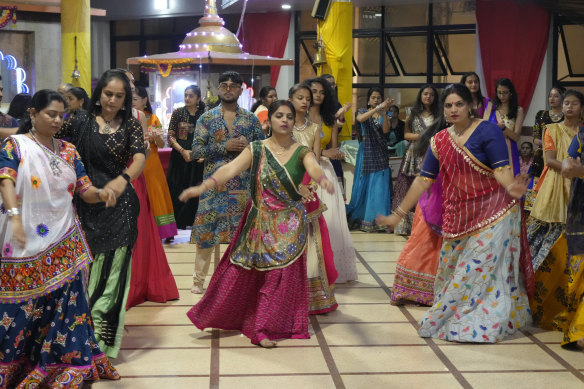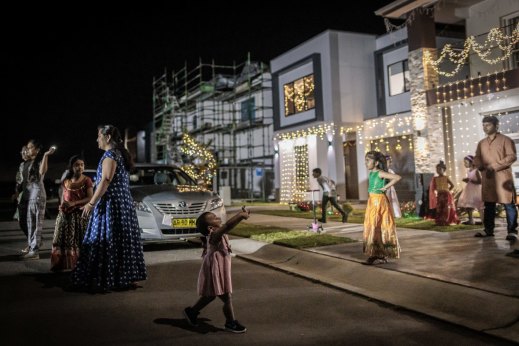Opinion
Celebrating feminine energy, dancing with joy
Shobha Sekhar
AuthorFew cultures and faiths celebrate feminine energy, or ‘Prakriti’, as much as Hindus do.
During the September solstice, Hindu goddesses with supreme power are worshipped and venerated.

Navaratri festival celebrations are enjoyed by Hindu communities throughout the world.Credit: AP
Navaratri (nine nights), which culminates into Dussehra on the 10th day, started on October 15 this year. It falls on the first day of the brighter (waxing) phase of the Hindu lunisolar month of Ashvini. About 20 days after Dussehra is Diwali, the festival of lights, where the goddess of wealth, Lakshmi, is propitiated.
Feast or fast, traditions, prayers and cultural activities galore are planned during these 10 days. Pan-Indian festivities vary in the different regions of India.
This Hindu tradition of festive performance arts was inscribed by UNESCO as one of the “Intangible Cultural Heritage of Humanity” in 2008.
Empowerment of women that aligns with their life-stages is deeply entwined with the traditions. The first three days depict a young girl with a fierce, energetic fighting spirit to eradicate wrongdoing and evil. She dons battlefield attire and carries weapons.

Residents decorate their homes ahead of the Diwali festival last year.Credit: Brook Mitchell
The next phase is womanhood, where she marries and carries the responsibility of motherhood. The final three days is where she learns to be successful and gains spiritual and material wealth.
Thus, the three dimensions of a woman – Durga (goddess of retribution), Lakshmi (prosperity and tranquillity) and Saraswati (learning and achievement) – are worshipped to derive positivity and strength of purpose.
My early memories of Navaratri is visiting all our neighbours who decorate their houses with “Golu” – steps arranged with dolls and figurines, depicting various legendary stories – and rehearsing and singing songs, dancing into the night and being given various glorious foods. Golu was also accompanied by “Kolam”, or murals on the floor – sometimes in colour, sometimes in white chalk.
On the 10th day or Vijayadashami, we visited our gurus to seek blessings and continue with our journey of learning. Here in Melbourne, I run a school of classical music, called Kalakruthi, and my students assemble to re-pledge their dedication to the art form, and new students enrol for an auspicious start to their artistic endeavours.
It is contradictory, but festivals traditionally incorporate fasting, followed by feasts. I practise intermittent fasting and hope to balance the calorie intake.
Temples in Australia host a nine-day festival of cultural activities, and communities organise Garba (derived etymologically from the word garbha, or womb). Garba is a folk dance, where concentric circles are formed. The circles can grow in numbers and size, allowing thousands to partake in the simple dance movements.
Communal music and dance elevates the mind by the sheer power of display of talents and the spirit of “let go”. All are welcome to join the celebrations.
The Morning Edition newsletter is our guide to the day’s most important and interesting stories, analysis and insights. Sign up here.